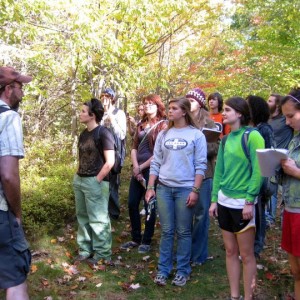Land conservation is booming, and the expansion of protected areas in border regions, often called transboundary protected areas, is particularly rapid. The creation of protected areas that cross human-defined boundaries reflects a new sort of outside the box thinking in land conservation and shows that we should start seeing land conservation and stewardship as a collaborative endeavor that involves all kinds of people.
In an era of globalization, we should expect things to cross boundaries, such as people, goods, capital, ideas and drugs to name a few. Why not land conservation campaigns as well? In this light, transboundary protected areas make a lot of geopolitical sense. They also make a lot of ecological sense. After all, birds, fish, bugs, mammals and even plants routinely disobey the boundaries we draw around them, making square parks like Yellowstone look silly, or at best arbitrary. Do the wolves stay within that square out there in the otherwise lumpy northern Rockies? Of course not.
We need to think outside these boxes and beyond National Parks to consider how ecosystems cross the boundaries we draw and get mixed up in our affairs. If National Park boxes are inadequate for free-roaming species, let’s connect those boxes to form a network. If the world is getting warmer and the animals have to pack up and leave, let’s think ahead and create habitats for them that don’t rely on steady temperatures. If the world is becoming urban, then let’s figure out how to preserve and enhance nature in our cities. This is thinking outside the box for land conservation in the 21st century.
This kind of thinking, in part, drives the recent boom in transboundary protected areas. Conservationists have their eye on borderlands as opportunities for win-win outcomes: political peace along with ecological harmony. The U.S. boasts several prominent examples on its northern and southern boundaries, including Glacier National Park, which adjoins Waterton Lakes in Canada; Organ Pipe National Monument, which adjoins the Pinacate and Gran Desierto in Mexico; and Big Bend National Park, which adjoins a host of Mexican protected areas. According to the U.N., these and other transboundary protected areas make up 27 percent of the total global conservation estate. In other words, more than one-fourth of the world’s protected areas are in borderlands.
We need to think outside the box socially as well. Land conservation, after all, is a profoundly social project. Just as we need to consider the lands outside parks as conservation-worthy, we also have to consider the owners and users of those lands as potential stewards. We need to move beyond the myth that conservation has to be done by the government with teams of uniformed guards.

Fortunately, we have great examples for guidance. In the war-torn U.S.-Mexico borderland, an informal network of ranchers, activists, government officials, indigenous people and scientists has created a culture of peace and collaboration in conserving the biologically rich Sonoran Desert. Closer to home, the Finger Lakes Land Trust works with private landowners and volunteer stewards to protect land through voluntary conservation easements. Ithaca College Natural Lands showcases a reconciliation of economic development with research, education and recreation on almost 600 acres of protected natural areas. These and other examples illustrate how land conservation in this day and age hinges on collaboration and innovation. Land conservation has come a long way since Yellowstone in the 1870s, when a box drawn on a map guarded by rangers was all we had to protect the nature we value most. Today, we envision a patchwork of lands under varied ownership and use, and a collaborative effort to support human and ecological communities.
Jake Brenner is the faculty manager of Ithaca College Natural Lands and an assistant professor of environmental studies and science. Email him at [email protected].







